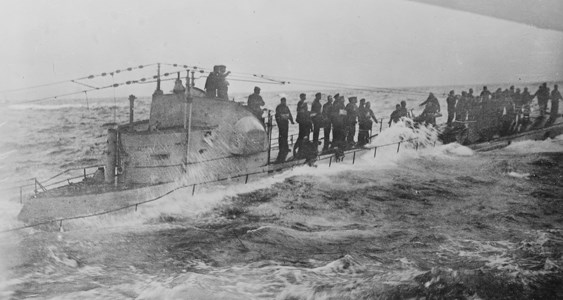
Library of Congress LC-DIG-ggbain-26138
World War I was in many ways the first modern war. Although trench warfare has become synonymous with the futility of the Great War, the advent of many new technologies was also to blame for the war's destructiveness. Machine guns, poison gas, rapid-fire artillery, aerial bombardment, tanks, and submarines were all new innovations that brought about horrors never before seen on the battlefield.
While most of the fighting happened on the ground in Europe, America was not immune from the fight. German Unterseeboots, submarines more commonly known as U-boats, showed the terrifying power of submarine warfare. Lurking undetected below the surface, offshore from the United States, U-boats could seemingly strike anywhere, anytime. In fact, it was not the land war in Europe that drew America into the war, but the war at sea.
Last updated: January 24, 2017
